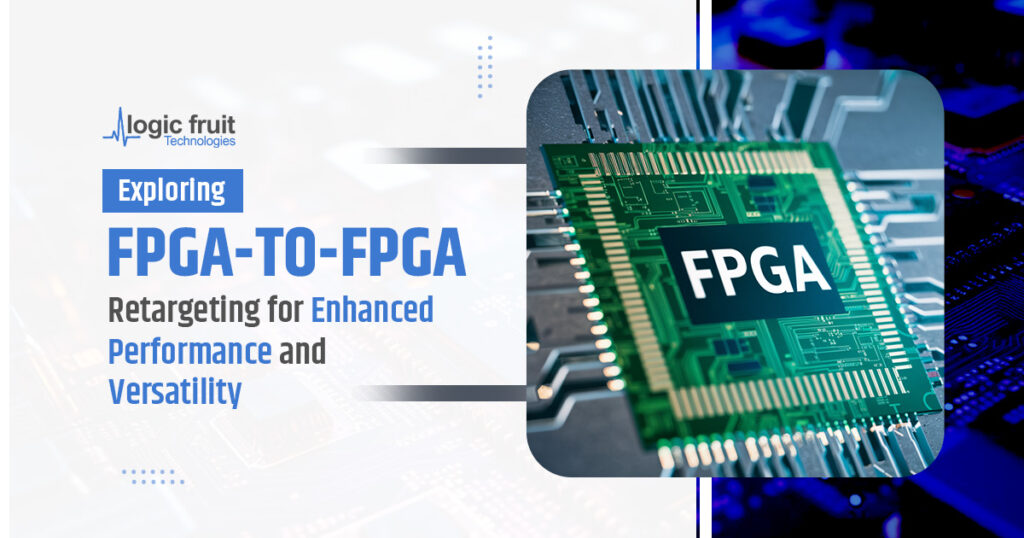Introduction
FPGA-to-FPGA Retargeting: Field Programmable Gate Arrays, or FPGAs, are becoming increasingly important in today’s fast-paced technological environment. FPGAs are reprogrammable silicon chips with great versatility that can be set up to handle a variety of jobs.
They are widely utilized in many different applications, from consumer electronics like computers and smartphones to critical systems in the telecommunications, automotive, and aerospace industries.
Their main benefit is that once manufactured, they can be reprogrammed to enable upgrades and reconfigurations as needed.
According to Grand View Research, The field programmable gate array (FPGA) market is predicted to develop at a compound annual growth rate (CAGR) of 10.8% from 2023 to 2030.
The market was valued at USD 10.46 billion in 2022. For the forecast period, it is expected that demand for field programmable gate arrays will be driven by the increasing trend of their acceptance in the fields of network processing, security, and deep packet inspection.
When traditional second-sourcing is nonexistent, FPGA retargeting plays a critical role in maintaining supply chain agility.
A technique called FPGA-to-FPGA retargeting involves moving operations and functionalities from one FPGA to another.
This is an essential method to improve versatility and performance. We can maximize the utilization of hardware resources through retargeting, which will result in quicker processing times and greater effectiveness.
To increase supply chain efficiency, second-sourcing has vanished since the 1980s. The highly optimized supply chain of today has performed admirably. That is until it was disturbed by the pandemic.
One solution to supply-chain issues is FPGA retargeting. Engineers provide the flexibility to handle supply-chain problems by developing various iterations of a board with distinct FGPAS.
The task at hand involves adapting the design to a new FPGA while maintaining its functionality.
In this discussion, we will delve into the mechanics of FPGA-to-FPGA retargeting, exploring how it works, and its benefits
What is FPGA-to-FPGA Retargeting?
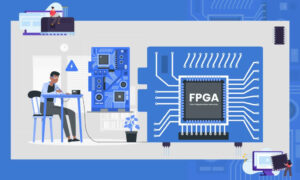
The process of updating the current FPGA design to work flawlessly on another FPGA without compromising its functionality is known as FPGA Retargeting
FPGA retargeting is a technique used by engineers to extend the life of legacy designs, address supply chain issues, and deal with the obsolescence of particular FPGA models.
The process of transferring tasks and functionalities from one Field Programmable Gate Array (FPGA) to another is called FPGA retargeting.
This entails reprogramming an FPGA’s logic and operations such that they operate on a separate FPGA.
Related Read: FPGA Market: Logic Fruit’s Insights & Trends Report (2024-25)
Retargeting frequently aims to increase efficiency, boost performance, or adjust to changing needs without requiring additional hardware.
Here are some key aspects of FPGA retargeting
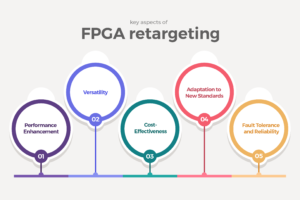
Performance Enhancement: The system’s overall performance can be enhanced by more effectively balancing the burden by shifting jobs from one FPGA to another. Better resource usage and quicker processing rates may result from this.
Versatility: Increased system flexibility is made possible via FPGA retargeting. For example, a device’s useful life and adaptability can be increased by reprogramming it to carry out new tasks as needed.
Cost-Effectiveness: Development and deployment costs can be reduced by reprogramming and reusing existing FPGAs rather than purchasing new hardware.
Adaptation to New Standards: New protocols and standards could appear as technology develops. Devices can be updated to meet these new standards without requiring hardware modifications thanks to FPGA retargeting.
Fault Tolerance and Reliability: Retargeting can be utilized on occasion to shift crucial tasks from a failing or unreliable FPGA to a more dependable one, improving the overall reliability of the system.
Related Read: CPLD VS FPGA – All you need to know
The Depth of FPGA Retargeting
If designers just utilized RTL, retargeting FPGAs would be simple. If so, we would retarget resynthesizing within the tool flow of an alternative vendor.
However, by simply dragging and dropping blocks into a schematic and connecting them with unique RTL, FPGA designers typically take advantage of vendor-supplied design intellectual property.
We are unable to just resynthesize a design since design intellectual property is linked to a particular FPGA manufacturer or model.
Using a fresh IP library, we must rework the design and attach our unique RTL to it.
FPGA retargeting verification goal
- Ensure that the netlist matches the original RTL.
- Modify the RTL using the new chip’s design IP.
- Ensure that the new RTL matches the new netlist.
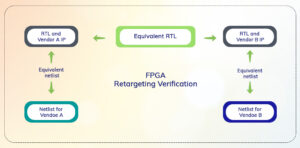
FPGA retargeting verification
FPGA Retargeting Methodology
The current synthesis tool can be used to create synthesized, placed, and routed netlists based on the retargeted obsolete/older netlists.
The functional equivalency of the retargeted obsolete netlist against the updated/modern final netlist is ensured by the FPGA equivalency test.
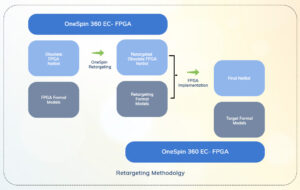
360 EC-FPGA retargeting methodology including equivalence checking
The FPGA equivalency verification tool not only verifies the difference between the outdated and modern netlists, but it also verifies the functional equivalency of the RTL to the outmoded netlist in cases when the RTL has not been manually altered to comply with the original specification.
The following considerations need to be considered to prove equivalence:
- Similar limitations should be used during verification if any were utilized during synthesis.
- If changes are made manually to the obsolete/older device netlist, then RTL must also undergo matching equivalent updates.
- RTL retargeting may be utilized if the user chooses to use the RTL for synthesis and retargeting and wishes to confirm that the outdated device netlist and the final netlist (which was synthesized using RTL) match. This is the case if the RTL is available for the obsolete/older device netlist.
The flow for RTL retargeting is as follows:
- Synthesize the RTL for the modern/updated device
- Make formal models for the updated/modern gadget and apply them, if needed. internet list
- Using an FPGA equivalency checking tool, demonstrate functional equivalency for RTL against the current/updated device netlist.
- Create (if necessary) and apply formal models for the obsolete/older device netlist
- Using an FPGA equivalency checking tool, demonstrate the functional equivalency of the outdated/older device netlist versus the current/updated device netlist.
Benefits of Retargeting
- The supply chain problems can be avoided and the life of older designs can be increased by retargeting existing designs to more recent FPGA technology.
- Retargeting lowers power usage while guaranteeing that designs are updated to the most recent safety and security standards.
- In the aerospace and defense industries, where legacy designs are commonly employed, this technology can have very useful uses.
- Using either current or alternate target FPGA technology, retargeting takes the final netlist from the original design and creates a functionally comparable final netlist. It is possible to reduce months of engineering time.
End lines
Retargeting saves money, time, and resources by avoiding expensive, time-consuming redesigns. Modern FPGA devices are supported in terms of trust and security, safety, and power-saving features because this flow is not dependent on the capabilities of the updated or modern target device.
You can utilize the RTL retargeting flow to make sure that the outdated device netlist functionality is resynthesized using the original RTL and kept in the updated/modern device netlist.


